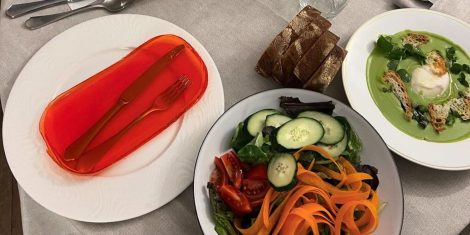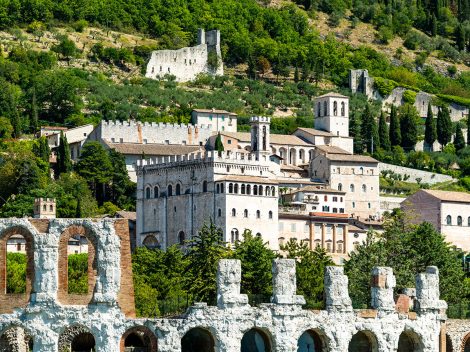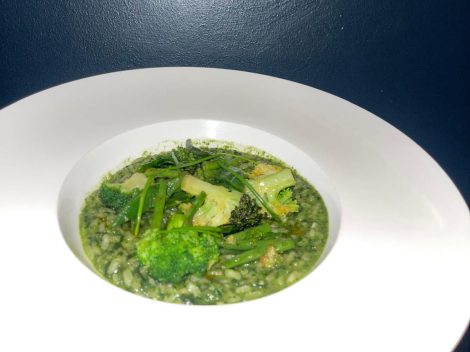What strategies does it call for and how do people abroad view and live with our agricultural products?
“Pasta equals Italian pasta! Certainly there’s a great production of dried pasta around the globe, in Europe as well as Canada, the United States, Japan, Russia, the Arab Emirates…Production technology can be exported, even if there are many variables that make the finished products different.”
What pasta do you find on store shelves abroad?
“There are two categories of merchandise. There’s Italian pasta and then there’s the local product. The Italian one is synonymous with quality, thanks to the continual promotional efforts we make.”
But are these products perceived differently in the different markets?
“In Asia – China, Japan, Korea – people are great spaghetti eaters. They historically have enjoyed various types of noodles. The Japanese in particular, though, are very attentive to quality, even from a technical point of view. Pasta is sold not only by name, but also by its thickness. The Japanese want to know what they’re buying, the origins of the product and the way it’s made. They are very fond of Italian pasta and the Mediterranean diet. Like us, the Japanese are almost always on the lists of people with the longest lives.”
Are there fashion and trend factors?
“Yes, in Korea, for example, Italy is very fashionable now. They are great fans and students of opera. They love our design. Their attitude is similar to the one we had towards American customs in the second half of the last century. So Koreans want their pasta al dente and they cook our traditional dishes almost too meticulously.”
And there’s America, the historic goal of our emigrants in the last century.
“Yes, but I want to underline how important the growth in pasta consumption is in new countries, such as India and Singapore. And think about an absolutely vital market like Indonesia, with its 350 million inhabitants. They turn to pasta also for reasons of religion. For example, it seems to be a food that’s very suitable during Ramadan. In the Middle East, instead, pasta is part of Mediterranean culture. They eat it a little differently, often as a side dish along with vegetables and meat, and that’s a centuries-old tradition. And there too, you find people who eat spaghetti with tomato sauce or cacio e pepe, cheese and black pepper. Certainly, it’s more difficult, for religious and cultural reasons, to come across historical dishes such as pasta alla carbonara or l’amatriciana.”
America was one of the great destinations for Italian emigration.
“There consumers fall into two big groups. There are the pasta orthodox, living in the United States for at least three generations. Their pasta experience is tied to the 1950s and 1960s: they like timballo and meat balls. Then there are the consumers of the new generation, those who discovered pasta because they travel and have seen the advantages of Mediterranean diet and live in a more conscious way. For these, pasta, like pizza, is a social occasion, an opportunity to enjoy a meal with friends and family. These modern consumers are very careful about how it’s cooked, its consistency, its toppings. Then there’s the European market. In many countries, for example France and Germany, Italian style is assimilated, it’s part of them. One day a week, they’ll eat Italian, another day they’ll eat Spanish. In France there’s the tendency to think that pasta is really French.”
Often, abroad, they imitate Italian dishes, but the results can be disastrous.
“Well, in England, the least Italian plate of pasta is the most popular – spaghetti alla Bolognese. Spagbol. It has become a typical English dish, even if it doesn’t exist in Italy. It has a very dense sauce, full of onions and chopped meat, and at the end, you eat the pasta and the meat sauce separately, on the same plate. It’s like what happened for chicken tikka masala. It derived from Indian cuisine, but it’s never made in India. These are the England’s most popular dishes, and they show how strong the images of Italian tradition are, even when reworked locally.”
What strategies must be worked out to defend our production on international markets?
“In the most developed Western markets, it’s important to stay vigilant. For example, pasta di Gragnano, which is an IGP (protected geographical indication)product, must heavily promote and protect the denomination. It is relentlessly imitated, and we must uncover false versions. I think that’s true for other important Italian food and agricultural products. We have to hold the banner of quality high and help consumers to be knowledgeable so as to prevent fakes and promote the image of true Made in Italy. The government has to help with focused planning, but businesses too must set aside sums for communication. It is fundamental to communicate the difference between the Italian product and fakes or local imitations.”
Numbers, markets and formats
The world market is growing. Every year it has been going up 3-5%. These are important numbers. Although there are historic, well-consolidated markets with annual growth of 1 or 2%, there are others that increase 15 or 40%. “It’s mostly the young who contribute to the increment in the consumption of pasta – a good omen that suggests continual growth in the future,” comments Giuseppe Di Martino. “Many markets only know the classic formats: tagliatelle, spaghetti, fusilli, linguine and penne are the most popular. Now orecchiette, paccheri and pappardelle are beginning to sell. The Pastificio dei Campi format that won a prize, Il Compasso d’oro, Campotto, came out of a dinner I had in my home with an American journalist. We were eating paccheri, but she admitted that she would never have eaten them in public because it would have been embarrassing for a woman to open her mouth wide enough to eat a pacchero. I accepted the challenge. The Campotto is a smaller version, a number 8. You can open your mouth less, but it offers the same sensation as the pacchero.”
Made in Italy and fusion
In a global market that varies widely, responding to many different and heterogeneous populations, Made in Italy must rely on its natural versatility, especially in the food and agriculture sector, and explore every possibility of introducing itself into the cultural realities of the world. This is the strength of Pastificio dei Campi strategy, “Guess who’s coming to dinner”, because it showcases the virtues of so-called contamination. Each month a foreign chef that belongs to the group Jeunes Restaurateurs d’Europe visits the Pastificio in Gragnano, near Naples, and cooks two recipes of pasta for eight people, recipes devised by him or her at home, outside Italy. The chef then participates a dried pasta full-immersion program, partnered with the chef of the Antica Osteria Nonna Rosa, Peppe Guida, in Vico Equense. A book that emerged from the project is ready for publication. “Every day Italian cooks make newly invented and created pasta dishes. Why shouldn’t foreign cooks do the same? Certainly, it’s important to know the tradition, the classics, but we need to move ahead, too, build the future. And these experiments, if done well and skillfully, open up important pathways. When a pasta format works perfectly with a topping, there’s nothing better. That’s what’s important. And with this project, we continuously carry out research,” explains Giuseppe Di Martino.
by Stefano Polacchi














